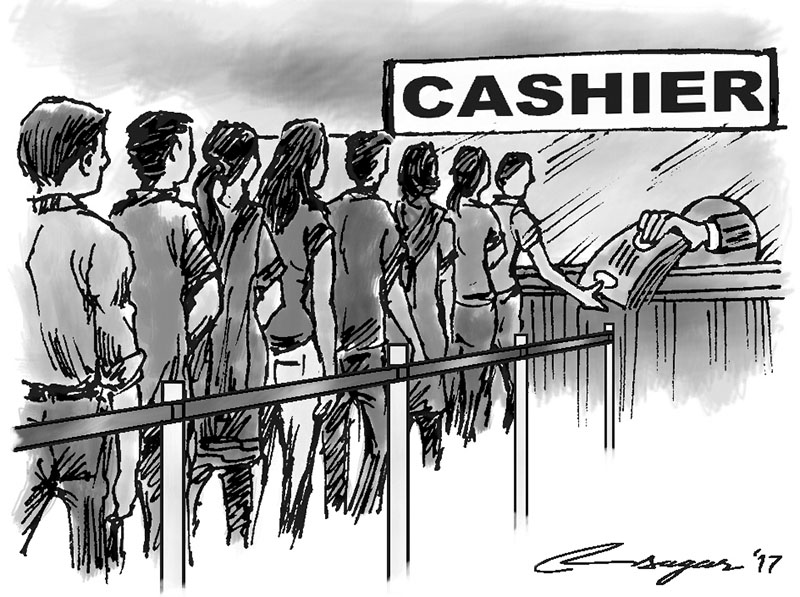Financial literacy paradox: Banking curriculum
Diversifying investments into productive sectors and helping deprived communities while accommodating inclusiveness should receive stimulus. This is the iron determination which will later be realized if the right steps are taken at the right time
The changing context of financial development raises question of what happens next. Be it on stock trading or banking or doing day-to-day money-business, recklessness is rampant amongst financial stakeholders. Innovative technology now confines emerging youth and adolescents to the ‘quick-doing’ syndrome. This shows how quickly it can transform education through technology. The prevailing usage of financial literacy these days is often targeted to children and youth. For instance, the basics of saving mechanism and value of money transaction are elementary to be taught to students. Banking curriculum on secondary or higher secondary level needs to incorporate this. For economic growth, financial accessibility and inclusion, the definitions, action plan and modus operandi of financial literacy campaigns need attention and deliberate planning.
Since the central bank made mandatory financial literacy initiatives to its licensed banks, there is considerably heightened concern among bankers. This has made them comply with the directives issued to them by organizing cheap financial literacy campaigns. Such campaigns are full of rallies with play cards, walkathon or similar gathering activities, which in no way contribute to growth in the economy.
Financial literacy is also aimed at changing the behavior of financial stakeholders. Financial literacy targets youngsters to stop diverting right pathway needs to focus primarily on spending priorities, asset management, degrading value of money with time saving benefits.
The modules of the financial literacy need to be according to the need-based assessment. While identifying and measuring the needs, campaigns are to be customized. The ongoing modules that are being adopted these days are of cover value formation on money, saving and the rewards and risks in making monetary decision. The plan of the bank officials on financial literacy is enabling them to make perfect investments and optimum saving mechanisms. Financial skills are the set of skills and expertise to correctly understand and interpret sound financial information in order to take a better financial decision.
At present, the government emphasizes domestic production. This idea is superb in terms of reducing huge trade deficits, employment generation and economic growth. Growth and credit expansion has positive impact together. However, debate surges on whether credit contributes to growth or vice versa. Unlike the worst-case scenario, the literacy campaign at present needs stimulus to growth in the relevant sectors of the economy.
While political parties have their tumultuous attitude on the upcoming local-level elections, the banking industry lacks a positive outcome due to the haphazard public expenditure decision in the late edition of financial year. However, robust banking education will have a positive impact on saving and lending decisions of the banks, securing an optimum balance on their portfolio while maintaining a compliance culture. The central bank is developing an improved oversight and policy that pools the resources as well as musters confidence of multiple stakeholders amidst the fraught investment climate.
Bankers should concentrate on enforcing their inherent strengths on formulating a credible plan to scan the real sectors. Education and corporate social responsibilities are to be targeted towards productive research through recruiting cognitive skill-holder economists.
The present need is to have a brief interaction, orientation and training to a potential borrower (new and upcoming entrepreneur) as well as mid-level bank employees to foster productive-sector lending, which will stimulate growth resulting in employment generation and augmenting purchasing power. The potential borrowers need to know about bank loan procedures and repayment, while the mid-level officers of banks should be able to harness the unlimited and unfulfilled opportunities of real sectors of the economy.
Financial literacy campaigns must now focus on investment and making everybody an entrepreneur. The possibility of providing loans to a skilled individual should be the focus of every bank as banking can help transform life through lending to an individual wishing to be an entrepreneur. Agriculture and tourism, the mainstay of Nepali economy, have abundant scope of finding people who are potential borrowers. Education is lacking on the basic know-how of lending and its recovery provisions to the people in general. The financial literacy should impart education to the bank employees on finding the right place to invest as well as to the people to deal with the bank for their business. Knowledge on influencing investment and saving decisions by fostering innovation and technology is the key to growth that contributes by means, such as employment to youths, household products to confront imports as well as uplifting the living standard of people.
Today, there are huge possibilities. But choosing the best one seems still an uphill task. Diversifying investments into productive sectors and helping deprived communities while accommodating inclusiveness should receive stimulus. This is the iron determination which will later be realized if the right steps are taken at the right time.
Giri is Deputy Director at Nepal Rastra Bank






